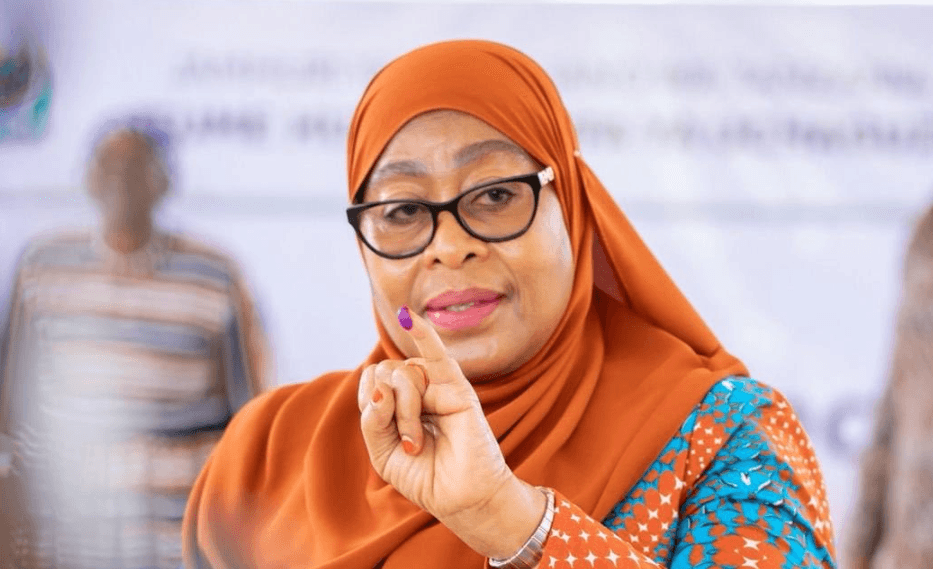The count-down to the national government handing over the management of the COVID-19 pandemic by the end of next month has started even as the second wave of the disease which started in October continues its course.Health Cabinet secretary Mutahi Kagwe has attributed this second wave to “a relaxation of restrictions, generalized fatigue from all actors, change in behaviour, and the onset of the relatively chilly flu season.”
Kagwe is confident handing over to the county governments the disease surveillance, testing, tracing and patient management. He believes they are well prepared to take up pandemic management in their counties.
“The county governments should give the daily updates of Covid-19 situation in their country just like the national government is doing now. They should also have their own protocols that are specific to the way the virus is spreading in their own area,” he says.
The 2010 constitution devolved health services to the county governments. The national government is responsible for development of health policy, management of national referral hospitals, capacity building and providing technical assistance to counties while the county governments are responsible for delivery of primary and secondary health care using funds disbursed from the national government and county own-source revenue.
But are counties ready to take over these responsibilities?
Among the key challenges that county governments are expected to deal with include limited availability of testing kits, personal protective equipment for health personnel, adequate staffing, and equipment such as ventilators.
County Preparedness
Data accessed by the Star indicates that the county governments are severely underprepared to deal with a resurgence of COVID-19 patients. Projections by the Institute of Health Metrics and Evaluation from the University of Washington says that Kenya is ill prepared to deal with the surge in infections which is expected to reach its peak in February.
An assessment done by the Council of Governors indicates that the majority of the counties have yet to set up the intensive care and isolation wards —needed to deal with the anticipated increase in COVID-19 patients.
Out of the 47 counties—Marsabit, Wajir, Siaya, Tana River and Baringo are the least prepared— they have the fewest number of ICU + Isolation ward beds based on the projected number of positive cases within their populations.Some counties, such as Tana River, Lamu, Nandi and Vihiga —do not have a single ICU bed even though the number of Covid-19 cases is on the rise in those counties.
But it's not only hospital beds that are inadequate. Majority of the county governments do not have ventilators or other equipment required to manage patients with severe symptoms who require ICU admission.Counties such as Tana River, Lamu Nandi, Marsabit, Vihiga and Uasin Gishu have yet to acquire and set up even a single ventilator in any of their health facilities. On the other hand, counties such as Isiolo and Trans Nzoia have installed more ventilators than the expected surge.
County health executives claim they have done their best and refused to admit they are under-prepared to take on pandemic control. Speaking on behalf of the county health executives, the caucus chair Dr Andrew Mulwa who is the Makueni county health executive said the county governments have met all the obligations as per the June directive by President Uhuru Kenyatta requiring each county to establish at least 300 isolation beds.
“As of October 28, there were 14,813 hospital beds in the counties and we are still establishing more so we are relatively good,” Dr Mulwa said.
Only ten have not met the 300-beds per county directive. It is not clear what evidence informed the 300-beds per county directive since it contradicts basic epidemiology by assuming that the disease will spread the same pattern across the different counties. Indeed, even as the projections indicated a surge in numbers,the number of new cases seems to be on the decline based on the daily reports.
Kwame Owino, an economist and a Chief Executive Officer at the Institute of Economic Affairs (IEA) published a paper in mid-November criticising this one-size fits all directive: “healthcare capacity in the 47 counties is varied, as well as their capacity to respond to the pandemic”, he wrote. Therefore, looking at age, or prevalence of certain immune poopers like cancers, there are people who are prone to “contracting the disease”, and this complicates disease tracking and management significantly.
Owino said the national government should support counties that have suffered systemic marginalisation and are building up their health systems. Additional assistance is also required in all the counties that border fragile countries such as Somalia (Garissa, Wajir, Mandera), South Sudan (Turkana) or counties bordering Tanzania (Kwale, Taita Taveta, Kajiado, Narok and Migori) where the government has adopted a policy of minimising or ignoring the impact of the pandemic.
In the 2019/20 second supplementary budget estimates, the Disease Surveillance and Response sub programme was added to the budget to finance the Kenya Covid-19 Emergency Response Project. This sub programme is expected to be allocated Sh2.7 billion in the 2020/21 financial, similar to what it received in the 2019/20 second supplementary budget for Covid-19 testing and treatment.
Another concern about the county governments’ preparedness is their ability to install, improve or expand their oxygen capabilities so as to lessen the rate of referrals to national referral hospitals which have a more stable oxygen supply. A 2018 assessment of the county government’ health facilities indicated that 35 out of the 47 counties already had at least one oxygen plant or were in the process of acquiring or producuring one. Another study assessing the capacity of hospitals to deal with a surge in Covid19 patients indicated that “only 37,216 out of 64,181 hospital beds are in healthcare facilities that have oxygen supply. This reduces the number of hospital beds that can provide care to COVID-19 patients with severe disease by 42%.”
TestingAccording to Kagwe’s plan, county governments are expected to increase their testing capacities. The Health Information Desk at the Ministry of Health was last December expected to compile and publish a list of labs in all the 47 counties which can be relied upon to test samples collected. In a tweet on October 22 the Ministry of Health announced the ministry claimed it established 39 laboratories in 12 counties.
“Adequate equipping of the labs to ensure timely and continuous access to lab services throughout this pandemic...continuous setting up of labs in counties, to have each county set up with a COVID-19 testing centre,” explained Kagwe.
And to ensure that all COVID-19 patients accessed the tests and treatment, Kagwe asked the county governments to utilise “recently up-scaled Universal Health Coverage.”
Currently, private hospitals and labs are charging upwards of Sh8,000 to Sh15000 for a Covid-19 test. Public health facilities are not supposed to charge for these tests but they are few and far between due to lack of reagents.
Kagwe’s plan to devolve pandemic management to the county government was informed by a research done by KEMRI Wellcome Trust which recommended that “localised and targeted measures” be implemented to control the spread. They urged the government to drop the nationwide responses in handling the pandemic such as blanket countrywide travel bans, curfews and instead adopt measures which are adapted to the needs and circumstances in specific parts of the country.
Staffing The county governments are also expected to hire qualified staff to achieve the appropriate staffing levels in line with Ministry of Health health worker- patient ratio protocols and to implement rotation schedules to balance the provision of health services and staff welfare to lessen the vagaries of fatigue”
Chronic health worker shortages have plagued the country’s health services for decades. The Kenya Health Workforce Survey 2015 indicates that the ratio of healthcare workers to population is 13.8 per 10,000 people which is three times below the Strategic Development Goals index of 44.5 per 10,000 population which the Ministry of Health uses as a guideline for the provision of quality health care.
The 2019 census shows that the country’s population grows by 2.2 per cent annually while the graduate health workers increased by a mere 1.2 per cent.
With the added burden of caring for those affected by the pandemic, health workers are suffering from overwork and attendant problems associated with poor working conditions. By the end of last month, at least 30 doctors, 26 nurses and ten clinical officers had died from the new coronavirus and more than 2000 had contracted the disease.
The Kenya National Union of Nurses Secretary Seth Panyako said nurses were working longer shifts than the recommended split shifts of five hour each with those on night shift starting at 5pm and ending at 8am the next day. An estimated 23,000 nurses are currently on strike demanding that the government compensate the families of the 26 nurses who have so far died from the Covid-19 virus. They are also demanding risk allowances, improved working conditions and provision of PPEs. The nurses and clinical officers started their strike on December 7. Doctors went on strike a week later and were able to negotiate a return to work formula by December 24. Clinical officers resumed work after 26 days of strike action after receiving assurances that they would be provided with PPEs and they would get medical and group life insurance which were among their key demands.
Drug shortages, understaffing and underfunding have been at the core of the six nationwide and numerous regional strikes that healthcare workers have staged between 2010 and 2016. The most prolonged strikes were in 2017— the 100-day doctors strike which was followed by a 150-day nurses strike over failure by the government to implement Collective Bargaining Agreements (CBAs) with their respective unions. Many of the issues remained unresolved and have resurfaced again in the recent industrial actions taken by healthcare workers.
The COG communication team acknowledged receiving our queries on the county governments’ preparedness and had not responded by the time we were going to press.
Methodology :The document from the Council of Governors shows how many isolation and Intensive Care Unit (ICU) beds and the ventilators show each county has. Due to the limited data at the county level, the model used in this article assumed that the population coverage ratio at the national level is the same as the counties’. The article used the data from the Census 2019 from the Kenya National Bureau of Statistics and the estimated peak as projected by the Institute for Health Metrics and Evaluation (IHME) is an independent global health research center at the University of Washington, in the USA. You can view the data here. To download it, click “File” and then “save as.”
This article was supported by the Africa Women Journalism Project (AWJP) in partnership with the International Center for Journalists (ICFJ).












